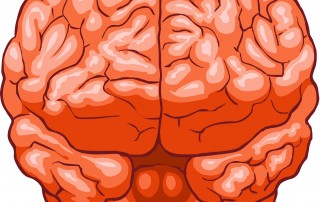Fight, Flight and … Freeze? Most people have heard of the “fight or flight” response. It is the body’s naturally hard-wired way of dealing with threats to one’s safety. I have written about it before, a few times, so I won’t go into it again but today I’m going to mention the third part of this response: freeze. In nature, animals typically go to flight first, since they are free of ego and have nothing to prove, only to enhance their own chances of survival. If they can’t go to flight and escape danger, they will go to fight, posturing and growling in hopes of scaring off the threat. If this fails, they will actually engage in aggressive behavior, albeit defensive aggression. Once these two options are unsuccessful, or if they are unavailable, most species have a form of reflexive behavior that could be termed “playing dead”. Playing Dead Emotionally Since most of the threats people face in our neck of the woods are social or emotional (although many do face actual physical threats in many forms), the freeze response may look a bit different than it does for a possum or cat. In our case, we tend to play […]
Complex Trauma: When the Whole is More Painful than the Sum of its Parts (PART 2)
Attachment Injuries Now that we have a rudimentary understanding of the necessity for, and basis of attachment behavior, we can begin to discuss attachment injuries and their effects. The term “attachment injury” refers to trauma that occurs within the context of a relationship. In order to understand the impact of relational trauma, consider an analogy from the field of physiology. Lessons From Physiology Proprioception is the body’s sense of where it is in space. It is the cumulative interpretation of the body’s various internal and external sensory systems that allow it to have an accurate assessment of the external enivronment. In layman’s terms, it is the body’s sense that allows a person to walk up the stairs or type at a keyboard without the necessity of visual information. When areas of the body are damaged or injured, this vital sensory ability is one of the first casualties. Musculoskeletal injuries result in impaired functioning of this vital sensory feedback system. This results in the increased likelihood of future injury, as the body has a reduced kinesthetic (body movement) awareness of the injured limb or joint. The parallels between this sensory system and the attachment system are easy to see. Attachment theorists […]
Complex Trauma: When the Whole is More Painful than the Sum of its Parts (PART 1)
Post-Traumatic Stress Disorder Post Traumatic Stress Disorder (PTSD) is diagnosed when an individual displays a cluster of symptoms that include various manifestations of the following: dissociation (feeling removed from reality), re-experiencing (flashbacks), and increased arousal (heightened stress response). In order for a diagnosis of PTSD to occur, however, these symptoms need to be as a result of the individual having been directly exposed to an event that threatened their life and/or safety or that of another individual. This criterion is known as the A1 criterion, since it is the primary criterion that must be present in order for diagnosis to occur. Amongst the general population, 7-8% of people will end up with PTSD at some point in their life. Within certain groups of people, however, such as individuals with substance-use disorders, the rate of diagnosis is much higher. For example, in one sample of substance-abusing psychiatric patients, researchers found that 90% had experienced physical/sexual assault and at least 50% met the diagnostic criteria for crime-related PTSD. However, there is a new direction of understanding with regard to trauma-related stress reactions; it is referred to as complex PTSD (CPTSD). Individuals in this category meet all of the same diagnostic criteria as […]
A Virtual Slap: How Words Can Hurt
How to Change The Past
One of the most frequently used lines of false consolation that I hear is “you can’t change the past”. Usually this bit of indispensable wisdom is offered as a word of advice when someone is describing the impact of some negative event from their history, something that they wish had never happened and often something that continues to affect them to this day. Of course, this advice and apparent statement of the obvious is rarely helpful, which is not surprising if we look at the gist of this rejoinder. Let’s say you run breathless to the neighbour’s house, pounding on the door. They open the door and ask what’s going on. You tell them that there’s been a terrible accident and you need them to call an ambulance because you think your brother is dead. I don’t think anyone would feel justified or even attempt to rationalize a response such as, “Well, it’s in the past. You can’t change the past. You just have to let it go and get over it.” We would expect that person to offer help, to repair whatever damage had been done, within reason and their capability. Of course we wouldn’t expect them to take […]
Validating Your Brain (Part 2)
Read Part 1 here Keep in mind that your brain’s task is to survive the moment, not the long-term. Without fail, the automatic behaviors that our brain engages in are accomplishing this task. However, due to its lack of perspective, the brain does not have the ability to coordinate momentary survival with long-term survival. So when your brain is acting, thinking, and feeling on your behalf, what does it think is happening? When we experience automatic behavioral responses, what is the brain trying to tell us? Think of the following example. The next time you feel an itch on your skin (which will be fairly soon, given that I have now invited you to think about it), try to physically look at the area of your skin that is itchy but DO NOT ITCH IT! Just look at the itchy place. If you can’t physically see it, try to visualize it in your mind as vividly as possible. You may even want to visualize yourself itching it. I can almost guarantee that devoid of any foreign substance interference, if the itch is generated by your brain, looking at it alone will be sufficient intervention to remove it. Give it a […]
Validating Your Brain (Part 1)
rofessor Julie Baumberger, of Capella University, once told me “You are not your brain”. While to many, this statement may at first appear confusing, to me it made perfect sense. The fact that we are able to notice what we are noticing, to think about what we are thinking about (referred to as meta-thinking by hoity-toity academic types) seems to denote some separation between the physical and automatic processes of our lower brain centres and our higher brain centres. Some may take it further and say that it is evidence of the existence of some non-physical part of ourselves, whether it be a synergistic outcome of the firing of neurons or an intangible soul. That is an entirely different discussion and one that will not be tackled here. However, I would like to talk about Dr. Baumberger’s maxim and how we might apply it in a real way to improving our experience of our existence. First, we need to look at our brain and describe what it is and what its purpose is. If it is separate from me, are we on the same page? Do we want the same things? Do we have the same strategies by which we […]








Recent Comments